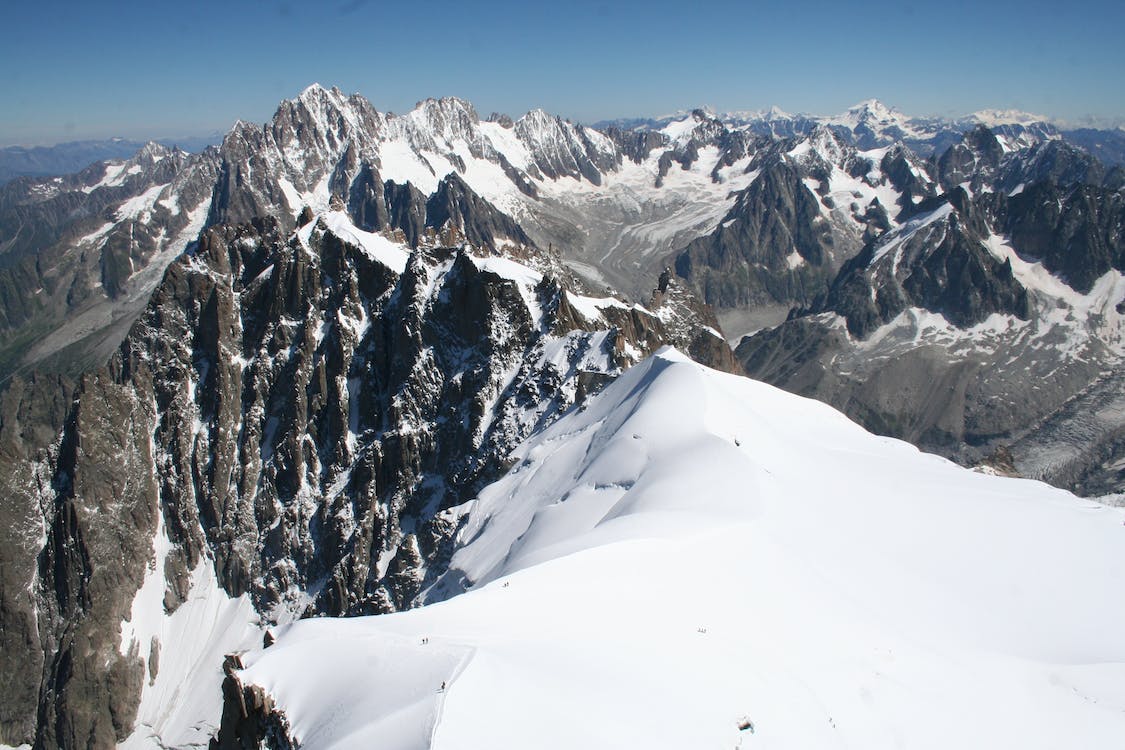Mera Peak
Location: Nepal
Elevation: 6,476 meters
The Mera Peak is Nepal’s highest permitted trekking mountain, sitting to the south of Mt. Everest. It is among the Khumbu Himalayan Range, whose trails start with coniferous forest, going to the rhododendrons and alpine environments. There are two main summits, Mera North, which is 6,476 meters, and Mera Central, which is 6461 meters. Both peaks are covered with heavy snow and maze crevasses. Up there, you get to see the most exquisite views of the Himalayas and five of the tallest mountains in the world – Everest, Lhotse, Cho Oyu, Makalu, and Kanchenjunga.
Highlights of the Mera Peak climb include the Himalayan flight to Tenzing Hillary Airport, a visit to the 200-year old monastery, camping in snows, walking on glaciers, and waiting for the sunrise to strike on the Himalayas ranges.
Most climbers ascend Mera Central as per trekking agencies’ recommendations. The trail to the true summit, which is only five meters higher than Mera Central, is less steep, making it prone to avalanches.
About the trek
The trek to the Mera Central requires technical knowledge, a climbing permit, and necessary mountain climbing skills because crampons will be used a lot. If you plan to reach one of the Himalayas’ summit, the Mera Central Peak will be a good attempt.
Climbers will start and end in Lukla at the border of the Khumbu region. From the capital city, there will be a 30-minute daily flight going to the trailhead. It is also possible to trek to Lukla from outside Kathmandu using the “pioneer’s route” located at Jiri. The trek to Lukla lengthens the expedition by about five to six days.
There is no other option for accommodation aside from camping. Camping grounds will be anywhere from pine forests to grassy meadows to deep snows. Meanwhile, climbing essentials include ice axes, crampons, harness, prussic loops, and plastic mountaineering boots.
When is the best time for the climb
The best time to ascend Mera Peak is during Spring, from March to May, or Autumn, from September to November. Both seasons have long periods of stable weather. In other months, strong winds and a higher chance of snowfall make the climb harder and dangerous.
How long is the Mera Peak climb
Generally, the climb will take 15-20 days, depending on the pace and weather conditions. If you travel from outside Nepal, the first day will usually be spent on preparation and side trips to Kathmandu’s heritage sites. The official trek begins with an early morning flight to Tenzing Hillary Airport in Lukla, which elevates 2800 meters. From there, you will be trekking along freshwater streams and pine trees towards Chutenga Camp. Trekkers will spend the night at Chatrabu before reaching Zatre La Pass the next day.
Zatre La Pass requires ascending steep trails at about 4600 meters elevation. Here, you will have panoramic views of Numbur Himal, Kryolan Peak, and Kongde Ri. Not too far lies a dense forest with native wild animals and a view of Lumding Himal foothill valley.
The following day will be a journey to oak and juniper forests before stopping by to Tashing Ongma for seasonal teas. Notable places during the day’s climb are the Hinku Khola, Kothe, and the ancient resting place of Gondinshung. You will also pass by the Liungsumba Gompa that is approximately 200 years old. The gompa holds the scripted rock of Mera Peak, which is considered a reminiscence of luck for travelers. Camping for the night will be at the Thagnak grounds.
Acclimatizing to higher altitudes is essential, so there will be a day spent on the Thagnak camp. After trekking the trail of moraines coupled with sights of icy mountain ranges, the next stop is at the Khare Camp. This day will be challenging as you have to climb along steep and narrow paths before arriving at the Mera High Camp, where you can walk on glaciers. Climbers need to be careful of their foot placements and navigate through the snow attentively. The Mera High Camp is a rocky site where you would stay for the night before attempting to reach the summit the next day.
Here comes the toughest day of the trek. It would take about five to six hours from the camp to reach Mera Peak Central’s highest point. From there, you can reward yourself with the glorifying views of the surrounding Himalayas mountains. Unfortunately, it is impossible to camp around the summit as you have to return to the Mera High Camp. You may opt to spend another night there or retrace your steps back to Khare camp. The remaining days will be spent descending to Kothe, then to the Chatrabu camp, and back to Lukla.
How much does the hike cost
Climbing the Mera Peak costs around USD 2100 to USD 2500. There are also fees for climbing permits, which varies from season to season. Spring climb permit is around USD 250, and Autumn is about USD 125 while Winter and Summer is more or less USD 70.

